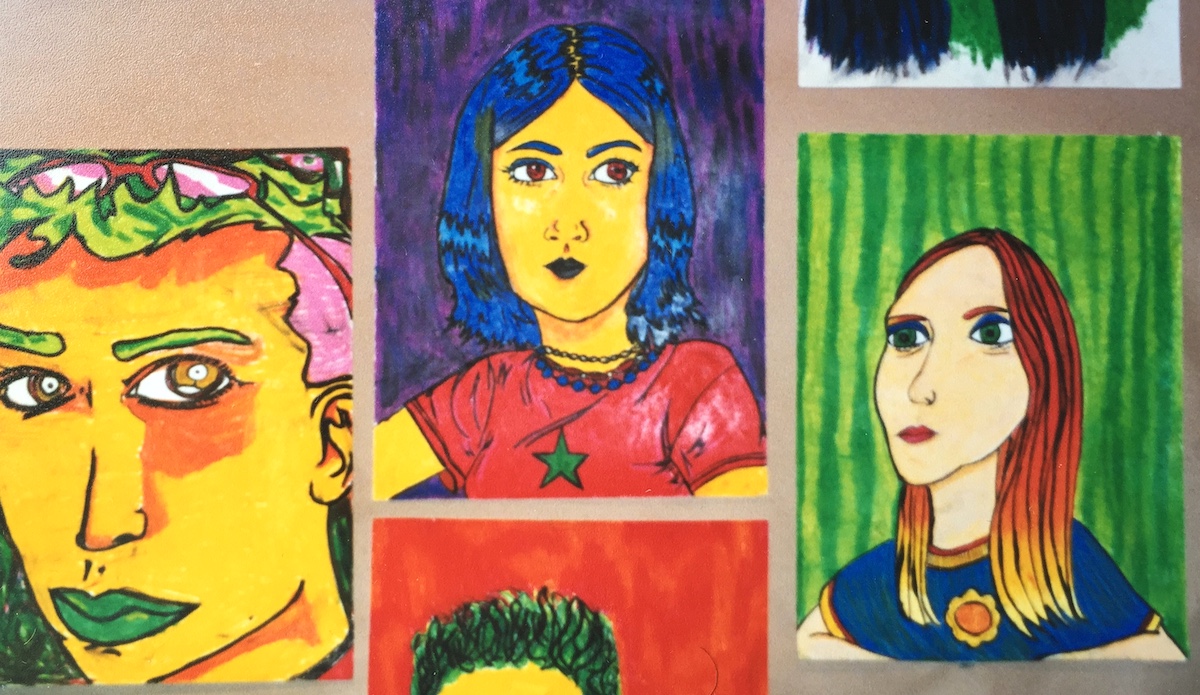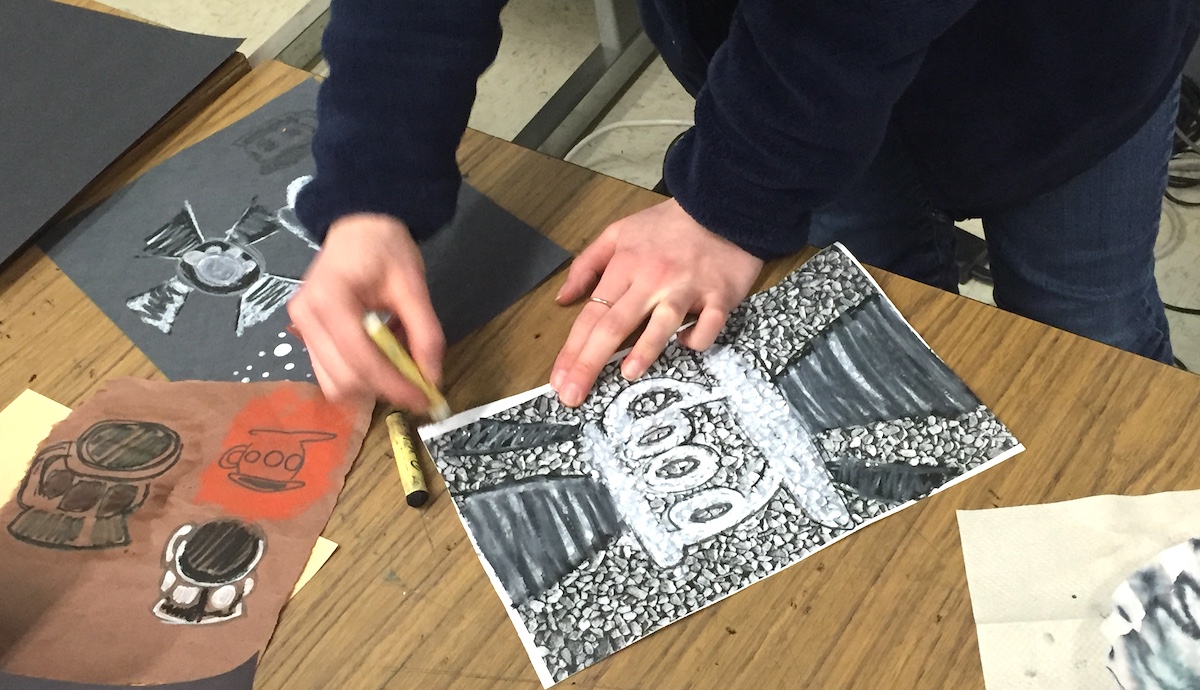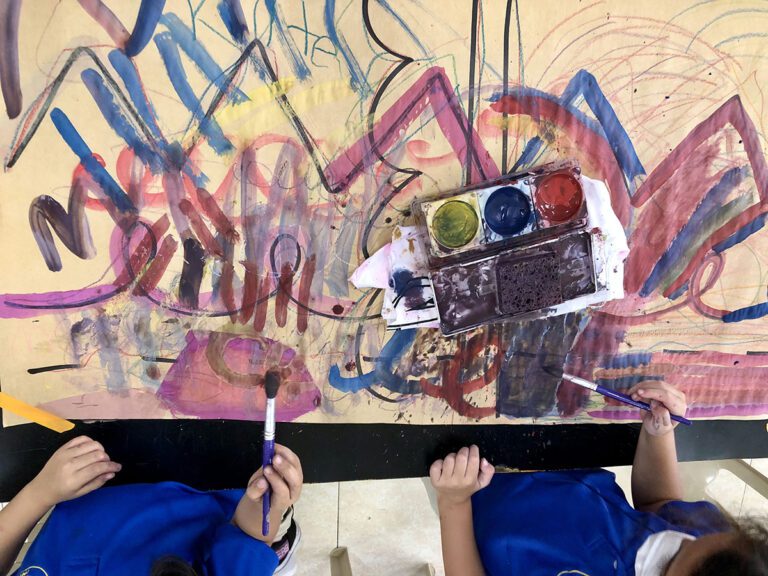Have you ever flipped through old art education textbooks? Or walked into a new job where you needed to follow a curriculum written by someone else, or encountered an original text that presented information different from your existing perceptions? One of my most memorable experiences was reading through primary sources on Discipline-Based Art Education (DBAE). This may be because I was taught to critique DBAE in a teacher preparation program with a Visual Culture approach. But on another, more endearing level, reading those primary sources felt like digging through family albums.

This brings me to the present. More than once, I have seen an art educator define their current pedagogy or curriculum as a response to “traditional art education.” When asked to define what “traditional” means, the answer almost always includes some form of Discipline-Based Art Education (DBAE)—defined by the qualities of teacher-directed instruction and fixed student outcomes. While this may be what DBAE has come to mean to many art educators, those were not the original defining qualities of the approach. The misunderstandings are concerning.
Here are some clarifications of DBAE and what it actually means for your classroom:
The origins of DBAE may surprise you.
Disciplines by their very nature are partially characterized by communities of practitioners and procedures that facilitate inquiry. In 1992, DBAE still felt new, and in The DBAE Handbook, Stephen Dobbs described DBAE as “a theoretical approach rather than a curriculum.” He also explained that DBAE could be “configured in a variety of ways to meet local instructional goals and to accommodate teachers, curriculum traditions, resources, and local circumstances.”

Dobbs traces DBAE’s roots back to the 1960s and programs that indicated a growing interest in comprehensive and multifaceted art education, such as the Aesthetic Education Project at the Central Midwestern Regional Educational Laboratory (CEMREL). While there were many approaches to its actual implementation, the core disciplines that defined the DBAE included:
- Art production: making art
- Art criticism: responding to and making judgments about art
- Art history: gaining knowledge of the contributions artists have made to society
- Aesthetics: understanding how people justify arguments about art objects
You may owe more to DBAE than you realize.
For art educators who draw upon a blend of approaches, our practices may go back to DBAE more than we realize. If you organize units according to themes or big ideas, you even might notice a few that could reasonably be picked up and used today in Kay Alexander and Michael Day’s DBAE Curriculum Sampler.

More importantly, when contemporary art educators…
- develop sequential curriculum
- engage students in looking at and talking about artworks
- invite professionals as visiting artists
- care about developing students as future professionals in the arts
…we can probably thank DBAE. According to Dobbs, DBAE curriculum’s qualities also included sequential organization, the central use of works of art (professional art, from museums, etc.), balance across learning in the four disciplines, and knowledge of child development.
There is choice in DBAE.
Documents about DBAE offered rationales with the intention of helping secure time and funding for art instruction as a part of all K-12 students’ general education. Among the rationales in The DBAE Handbook are statements on civilization, creativity, and communication. Readers will also find the following statement about choice:
“Art teaches students to make choices based on critical assessment, not simply personal and subjective preference. It provides many models that can help students learn to make reasoned choices and become discriminating consumers of the plethora of ideas and values that circulate in our culture. Art education nourishes the idea that life’s important problems have more than one answer and that a variety of solutions may be created in response to any given problem.”
Who would have guessed? From a DBAE perspective, choice was one of the goals for including art in general education.
Is There One “Right” Way to Teach Art?
Reframing DBAE in context.
In hindsight, many art educators criticize DBAE. For example, disciplines are also defined by established bodies of knowledge. In DBAE, the established body of art historical knowledge referred to artworks vetted and collected by art museums.

This body of knowledge and phrases such as “discriminating consumers” need to be understood in the context of the elitism associated with museums in many communities and the relative lack of diversity in their collections. While recognized decades ago, these issues persist in many places to this day.
There is a hint of the past in everything new.
In practice, many contemporary art educators’ pedagogy and curriculum are a blend of several different innovations and efforts intended to strengthen our field. We may adjust our personal practice based on the needs of different groups of students at different points in time. If DBAE—original DBAE—works for you and your students, that’s great! If it doesn’t, try not to get too frustrated with other art educators who value it. We are never totally cut from our roots, and there is a hint of past experience in everything new.
What is your experience with Discipline-Based Art Education?
How have those experiences shaped your thinking about art education?
Magazine articles and podcasts are opinions of professional education contributors and do not necessarily represent the position of the Art of Education University (AOEU) or its academic offerings. Contributors use terms in the way they are most often talked about in the scope of their educational experiences.





